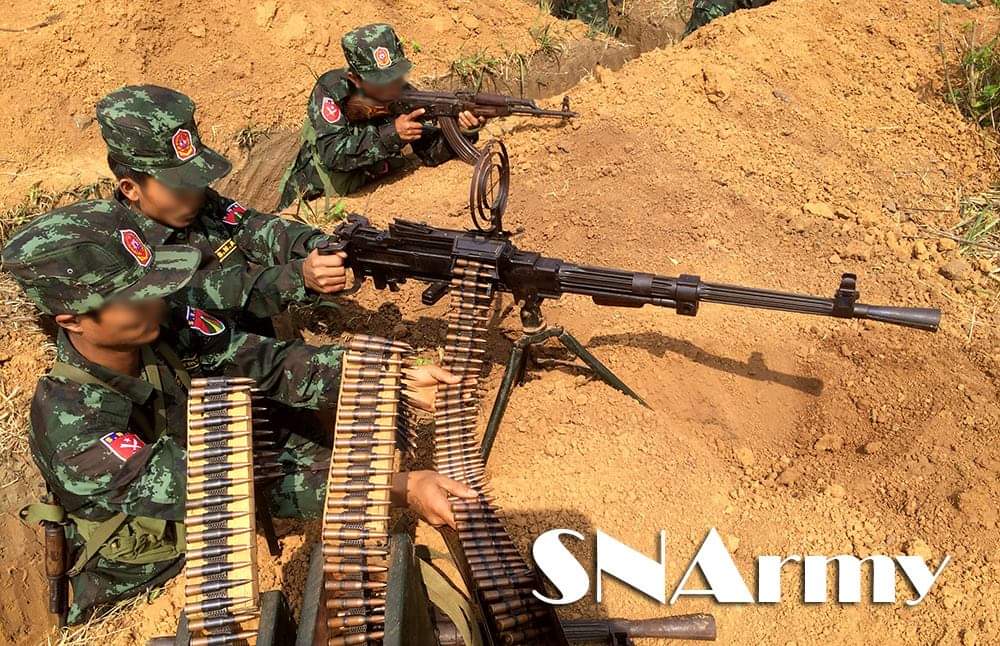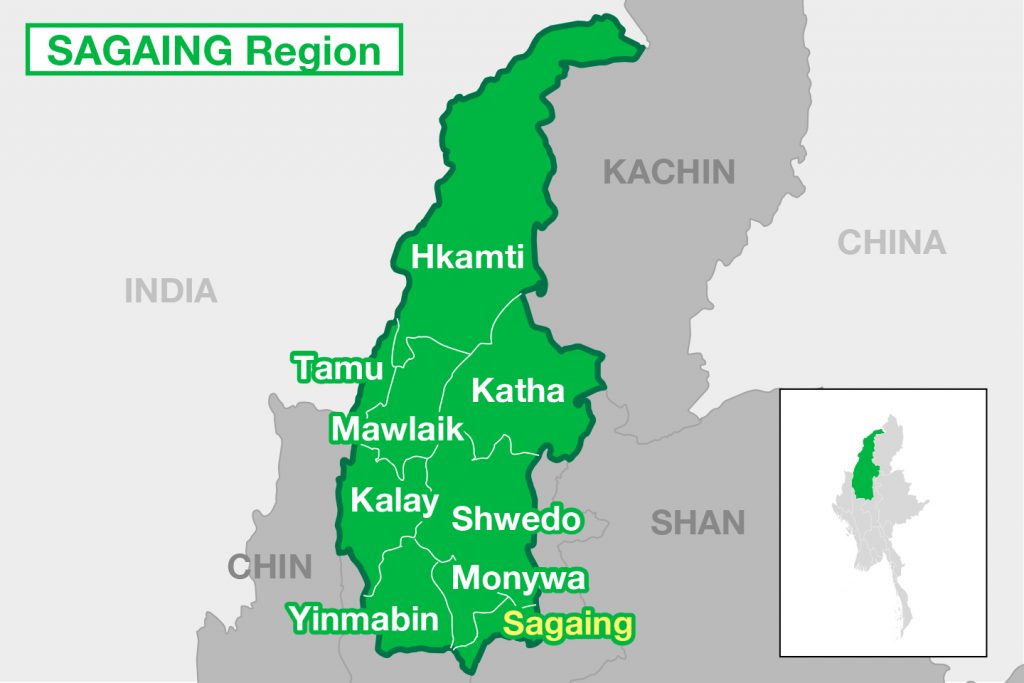The animosity or conflict between the Shanni and the Kachin in northern part of Burma or Myanmar covering Sagaing Region and Kachin State isn’t a new development, which has its roots in pre-Panglong Agreement of 1947 before the country’s independence from the British in 1948.
.
Let us go back a little into the historical backdrop of Shanni, or “Tai Leang” as they called themselves which means “Red Tai”, translated into Burmese as “Shanni”.
BACKGROUND
When the Bamar planned to regain independence together with the Frontier Areas from the British, ethnic groups demanded the right of secession.
The inclusion of Shanni areas into the Kachin State was said to be the bargaining outcome from the Kachin forsaking secession rights from the Union, which in turn was compensated with some Shanni territories’ inclusion into the Kachin State.

In a book written by one Karenni politician Khun Marco Ban titled, “From Panglong Spirit to the establishment of genuine federal democratic union,” he writes: “Prime Minister U Nu told Sima Duwa Sin Wa Naung that in forming Kachin State, in addition to Myitkyina, Bhamo District will be included, including that the Chairman would be Kachin ethnic which will become law. In response, the Kachin leaders would forsake the secession clause, which the Sima Duwa accepted it.”
In the same vein, Kalay, Hkamti, Mawlaik, Katha and Tamu districts were incorporated into Sagaing Region which was formed according to 1974 Burma Socialist Programme Party (BSPP) Constitution. As a result, Shanni State was completely removed from the map of Myanmar.
“We are not demanding a new state, we just want to get our statehood back,” said SNA Private Sai Mong, according to the report of The Irrawaddy on 8 April 2019.
Shanni people have had their own rulers since time immemorial. Mohnyin Saopha Sao Long, Wuntho Saopha Sao Aung Myat and Hkamti Long (Putao) Saopha were most prominent Shanni saophas, or rulers.
“Though we are not in Shan State, we are a Shan tribe. We live in Kachin State and Sagaing Region, so we are not consolidated. The Kachin say we are a vassal of the Bamar, and Myanmar government troops say we are the Kachin armed groups’ informants. We formed the Shan Nationalities Army (SNA) to claim the fundamental rights of our Shanni people,” explained the commander of SNA Brigade 891 Lt-Col Sai Aung Mong concerning the injustice done to his people due the unfair historical agreement of pre-independence period; and again by the BSPP 1974 Constitution in the creation of Sagaing Division or Region, without preserving Shanni’s cultural and ethnic identities appropriately within the political system.
SHANNI NATIONALITIES ARMY (SNA)
Although SNA has been founded on 5 June 1989 at Indian-Myanmar border, the military activities only started in 2009, according to Shan Nationalities League for Democracy’s (SNLD) General Secretary Sai Leik, alias Hurn Kayang, a well known Shan politician and analyst, in his recent Shan News commentary.
The SNA is active in Hkamti, Homalin, Phaung Pyin, Pinlebu, Wuntho and Banmauk in Sagaing Region and India-Myanmar border regions and Mohnyin and Moekaung in Kachin State. It has three brigades—891, 972, and 753—with about 1,000 to 1,500 armed soldiers.
It is trying to establish Shanni State which comprises Mawlike District, Kale District, Hkamti District, Katha District and Tamu District in Sagaing Region and Bamaw District, Myitkyina District, Mohnyin District and Moekaung in Kachin State.
According to SNA statement of 5 July 2022, on its 33rd founding anniversary, it reiterated its goals as follows:
- Establishment of Shanni State
- Anti-narcotics
- Achievement of a genuine federal union
- All round development of all people inhabiting the northern region of Myanmar and peaceful co-habitation
- Unity of all Shan ethnic groups
CURRENT SITUATION
On August 20th around 6:00 a.m., a camp of the Shan National Army (SNA) in Sagaing Region, Nam Taung Village, Baan Mauk Township, was attacked and captured by the 200 strong joint forces of Kachin Independence Army (KIA) and Regional Defense Forces (PDF).

SNA spokesperson Colonel Sai Aung Mong told Channel News Independent: “KIA and PDF attacked one of our outpost in Baan Mauk Township, Nam Toung Village. It is a morning attack on a small outpost at the tail end part of the village. The combined force was about 200 strong and as it was very near to the village, we quietly withdrew so that the villagers won’t be hurt.”
The camp is only a small forward camp with no more than 10 soldiers. He said there were no casualties.
Similarly, last August 8, in Hpakant Township, a forward camp of the Shan National Army (SNA) near Se Zin village was attacked by the KIA and PDF combined forces, according to the Channel News Independent report of August 20.
The combined junta and SNA forces reportedly launched air strikes on Se Zin village on August 9. There were reports of civilian casualties and the burning of at least 300 houses affecting an estimated 500 households, according to the UN’s Office for the Coordination of Humanitarian Affairs weekly report on August 16.
It said more than 2,000 people from Se Zin village have fled their homes, seeking refuge in six displacement sites in Tar Ma Hkan and Haung Pa villages in Hpakant township.
Fighting has intensified between the KIA and the combined forces of the military and the SNA in Hpakant Township, jade-mining region of Kachin state, since late July after the KIA raided the latter’s camps near Se Zin village, according to UCA News of August 19.
But regardless of such alliance relationship, perhaps due the SNA survival instinct, the relationship with the Burmese military junta has not always been cozy, as starting from 2015 the SNA has been clashing with the junta troops on-and-off until 2020, according to Hurn Kayan in his recent commentary in Shan News.
After the military junta’s February coup last year in 2021, the SNA was engaged in battles with the junta troops at Ta Kaung Moo, Homalin Township.
Later in April and May armed clashes occurred between the SNA and junta in Hkamti and Homalin, townships continuously.
Apart from that ships carrying jade for the junta’s U Paing Limited sailing along the river within SNA operation territories were confiscated.
When Sao Khun Kyaw, second in command of the SNA was assassinated on 27 May 2021 the armed conflict with the junta went on until this year August 6 and from then onward no armed clashes between the SNA and the junta were registered.
This year in March when the SNA started to collect tax in Hpakant Township, the KIA and SNA began to engage in fights by raiding each others military positions.
On 14 July 2022, SNA issued a nine-point statement urging not to fall for the propaganda and fake news in social media that will lead to disunity of the Shanni people; and lashed out at all elements that seek to destroy the Shanni people, without naming them.
But it is clear that the statement aimed as those Shanni who are sympathetic to the National Unity Government’s PDFs and the KIA. The statement vowed to crush those elements working against the Shanni people.
A paragraph in the statement writes; “SNA informed the Shanni people that it is working together with its military commanders and Shanni administrators to uphold peace and tranquility of the region.”
PERSPECTIVES
Given such circumstances, it is clear that the wrong historical legacy has to be addressed, one way or the other, to resolve the inter-ethnic conflict.
The Kachin may be reluctant to make accommodation for the Shanni and vice versa, the Shanni won’t give up their rights to exist. The only way out is through political dialogue and settlement, within the mold of “unity in diversity”. And to do this the identity politics will have to be rethought, most preferably through fusion or inter-meshing of ethno-nationalism and civic nationalism to form a common identity within the Kachin State and also Sagaing Region.

Other than that, manipulation of this brewing ethnic conflict, either by the Bamar military junta or KIA to gain advantage for the short term goal will throw the region into never-ending ethnic conflict war in the long run, which will then be hard to reconcile and recover.
While the Bamar military junta will not shy away from its usual usage of divide-and-rule policy and to manipulate the situation to its favor, the Shanni and Kachin should think twice to descend into the never-ending, inter-ethnic conflict pit, as both have to live with each other as neighbors, whether they like it or not.
In other words, minimize the animosity and try to accommodate each other by applying win-win and not win-lose game plan outcome, which the recent development seems to be heading for.



